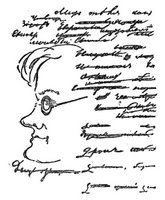A CHINESE 'STRATEGIC THREAT'? A DEFLATIONARY POINT OF VIEW
"A new Chinese anti-ship missile that will significantly alter the balance of military power in the Pacific is now operational, according to a senior US commander. Admiral Robert Willard, the top US commander in the Pacific, said the Chinese ballistic missile, which was designed to threaten US aircraft carriers in the region, had reached “initial operational capability”.
His remarks signal that China is challenging the US ability to project military power in Asia much sooner than many had expected. The US and other countries in the Pacific region are increasingly concerned at the speed with which China is developing its naval power. Japan, for example, recently decided to refocus its military on the potential threat from China.
“So now we know – China’s [anti-ship ballistic missile] is no longer aspirational,” Andrew Erickson, an expert on the Chinese military at the US Naval War College, said in response to Adm Willard’s comments to the Asahi newspaper. Defence analysts have called the Dongfeng 21 D missile a “game changer” since it could force US aircraft carriers to stay away from waters where China does not want to see them. These include the Taiwan Strait where a potential conflict could develop over the self-ruled island which China claims.
The land-based missile is designed to target and track aircraft carrier groups with the help of satellites, unmanned aerial vehicles and over-the-horizon radar. Aircraft carriers and their accompanying ships are unable to defend themselves against such a threat".
Kathrin Hille, "Chinese missile shifts power in the Pacific," The Financial Times.
28 December 2010, in www.ft.com.
"About thirty years ago the fear of the 'Yellow Peril' was the fashion. It was said that China and Japan were about to advance towards the economic and perhaps also military conquest of Europe and other regions. Much was written to stress the vast size of the yellow races, their modest standard of living which ensured the low prices of manufactured goods, the political sense of Japan, the reawkening of China after a sleep of centuries. Then gradually these fears abated and were replaced by others..."
Vilfredo Pareto, "Russia," 13 June 1922, in The Other Pareto, Edited and translated Placido & Gillian Bucolo. (1980), p. 258.
The American Defence Secretary, Dr. Gates is now in Peking for discussions with his PRC counter-parts. Which is something of an improvement considering the sometimes childish reactions of the Chinese leadership to American (and other) powers policies which they disapprove of. Given the prevalence of recent reports such as that in the Financial Times on the 28th of last month, about some alleged threat to the current American military pre-dominance in the Orient, I thought that it would be worthwhile to have a more in depth look at the actual contents of what the PRC is doing on the military side. There one finds that, while Peking is indeed greatly increasing its military spending, it is doing so from a very very low base: about still only one percent of Gross Domestic Product. And, as a Sino-American China expert, recently noted for example notwithstanding the discovery over the New Year's holiday that the Chinese military had developed its own 'stealth' fighter, the PRC's
military capabilities were still rather limited:
"'They [the PRC] lack a suitable engine,” says Tai Ming Cheung, an expert on Chinese defence technology at the University of California, San Diego. “Judging from the development cycle of their earlier fighter, the J-10, it will be another eight to 10 years until this aircraft can fly.” He points out that China still lags far behind the US and Russia in both shipbuilding and even more in aviation". 1
Similarly, as the American defence analyst, Thomas Barnett recently noted, notwithstanding all of the bombastic utterances that occasionally come from the PRC's military leadership, that fact is:
"Despite our strategists’ rather breathless hyping of China’s self-declared capacity for delivering a debilitating pre-emptive strike (the “assassin’s mace” strategy that clearly apes Imperial Japan’s approach to its opening Pearl Harbor strike), the PLA’s Achilles heel is clearly its high-tech reliance on wide-area surveillance. Destroy that, or merely “blind” it, and China’s ability to follow through on its crushing first blow disintegrates. Along these lines, all the US military needs to do is demonstrate just enough implied capacity for offensive cyber/electronic/space operations to make the PLA doubt in its own ability to deliver a decisive first-round knockout. Again, Reagan’s employment of the “Star Wars” challenge is instructive: the Soviets could never discount the possibility that those devious and ingenious Americans might just secretly pull it off.
And if that argument doesn’t resonate, then simply realize that the PLA spent the last decade watching the world’s finest military attempt a shock-and-awe effort against lowly Iraq, only to be trapped into a prolonged unconventional conflict. The US military is battle-hardened in this regard, whereas the PLA is downright virginal by comparison (the PLA’s last war fighting experience was just over three decades ago, meaning only a small sliver of senior officers have ever seen combat). The United States likewise has the capacity to swap out its political leadership when wars go badly, while China’s single-party dictatorship possesses no such flexibility. Then there’s China’s single-child family structure: even under the spell of nationalism, how many people would be willing to sacrifice their “little emperors” in combat before social unrest skyrocketed beyond Beijing’s control? Nationalism is the promise of political will during wartime—not its guarantor....
Finally, the PLA and China’s senior Communist Party leadership give no serious indication of being anywhere near immune to deterrence on the Taiwan scenario, which lies at the heart of the ASBC’s ['Air-Sea-Battle Concept'] strategic rationale (with Iran a distant second). Off the record, senior Chinese officials readily indicate a complete understanding of the logic of deterrence with regard to Taiwan. They view the “assassin’s mace” as PLA’s capacity to threaten the US Navy’s capacity to threaten the PLA Navy’s capacity to threaten Taiwan with invasion". 2
Au fond the Americans and their allies in the Orient (not even including India of course), still have by far the upper-hand in the military balance. While that may change somewhat in the moyen duree (to use a Braudelian term), the likelihood is that any changes will not be of such scale to seriously threaten that favorable balance to the West. Notwithstanding reports to the contrary, the decline and fall of the West in the East has yet to occur. Quod erat demonstrandum
1. Daniel Dombey, "Gates warns over Chinese stealth aircraft," The Financial Times.
9 January 2011, in www.ft.com.
2. Thomas Barnett, "Big-War Thinking in a Small-War era," China Security. 21 October 2010, in www.chinasecurity.us.











0 Comments:
Post a Comment
<< Home